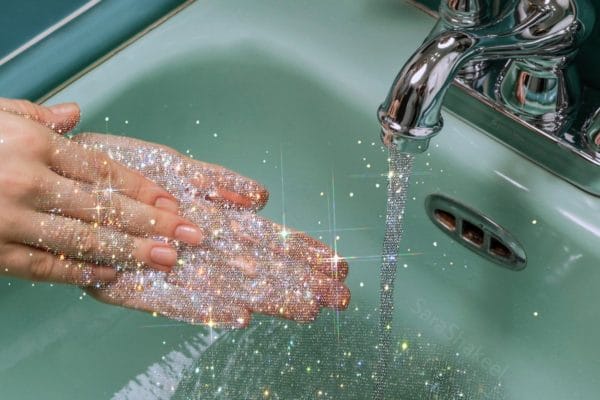*** I’ve come a long way in my rewilding journey since writing this. Particularly learning more about what ‘rewilding’ really means in an Australian backyard and adapting my approach along the way. I’m now partway through the project, and if you’d like to follow along, my garden can be found here on Substack.
If you had told me four years ago, when Dave and I moved into our current rental property, that my backyard would become my favourite place to be, I might have laughed.
We’ve always loved the outdoors. We bushwalk, spend most days at the beach, have a house filled with indoor plants. But until recently, that love of nature had never extended to our own backyard.
Back then, the yard was just a patch of grass. Our interactions with the space perfunctory. Something to be watered daily to keep the grass lush and green, a ritual inherited from generations of suburban dwellers.
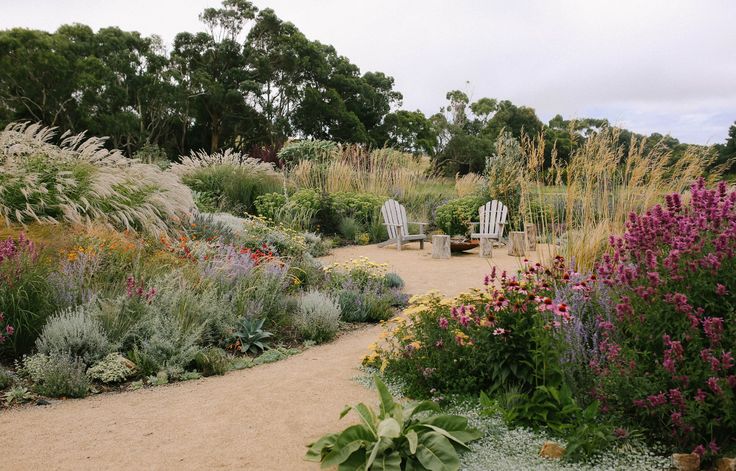
But then, as we all know, the events of 2020 turned our worlds upside down, and suddenly, that unassuming backyard became my escape, my project, and, unexpectedly, my teacher.
(Image above (and garden goals) Photographer Jessica Tremp via The Design Files)
I thought I didn’t have a green thumb
It started with a tiny veggie patch, three raised beds raising herbs and leafy greens.
Soon, a mini pollinator garden popped up alongside it, filled with lavender, rosemary, and butterfly bush. I learned more about the vital role of pollinators in our ecosystem and we stopped using pesticides and insecticides, recognising their detrimental impact on the balance of our backyard biosphere.
Fast forward three years, and my once-monotonous expanse of lawn, still a non-negotiable for our landlord, began to morph subtly yet significantly.
The grass now dotted with tiny yellow oxalis and clover flowers. The edge of the yard alive with a profusion of flowering natives in pots (with the intention to take them with us) like Phebalium, Myoporum, and Grevillea and Plectranthus, a banquet for the local blue-banded bees.
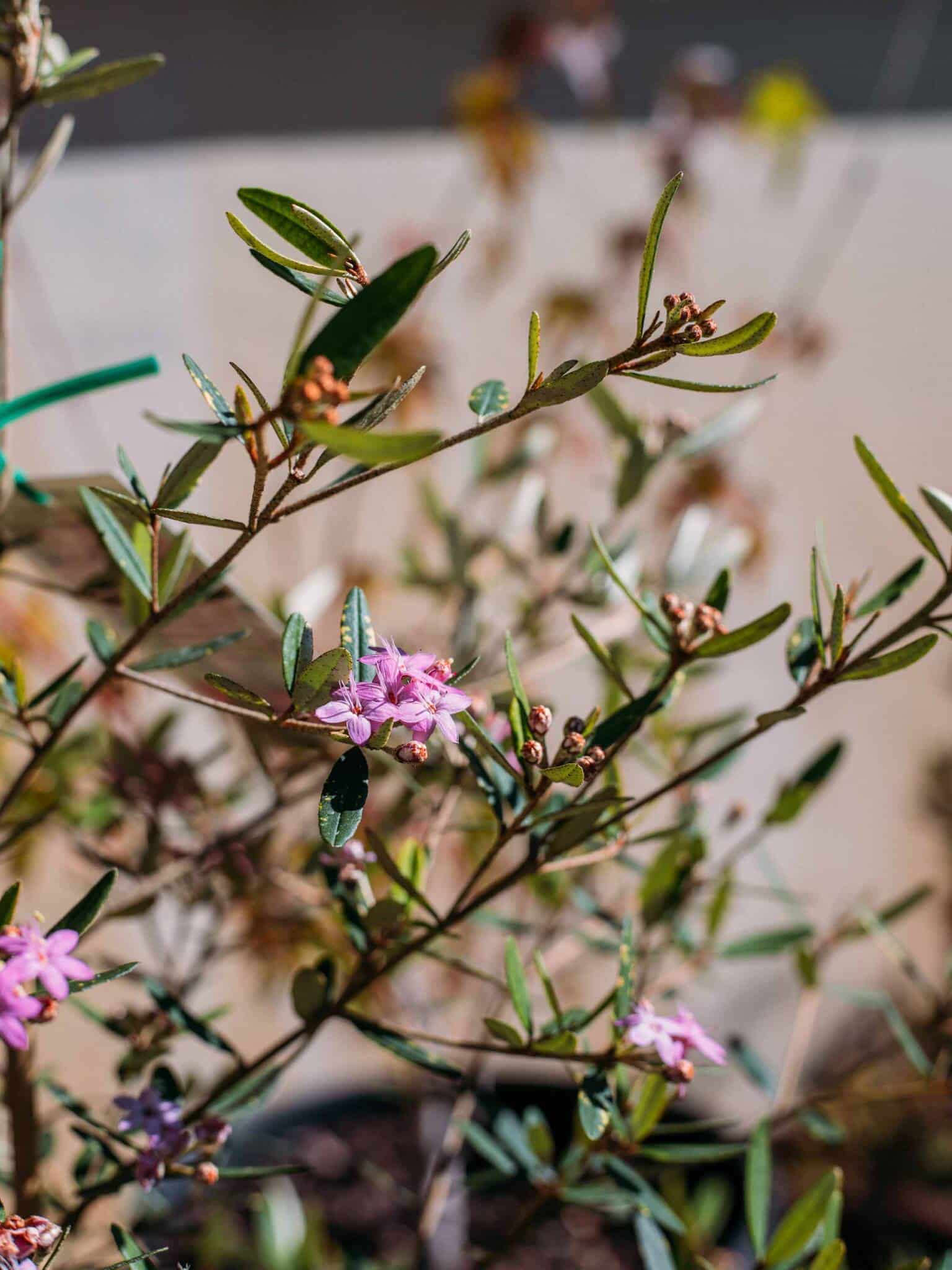
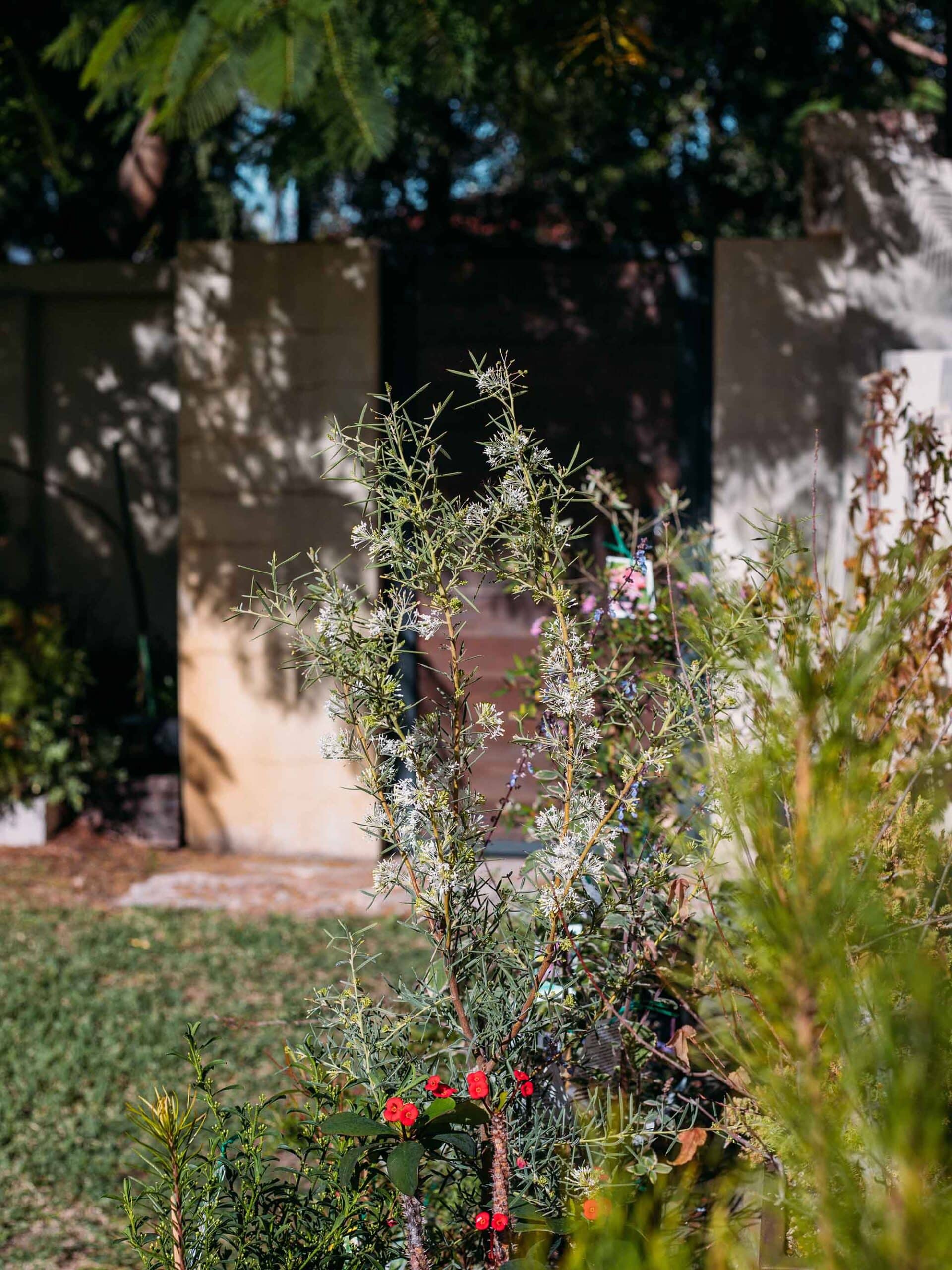
The veggie patch more diverse since I’ve learned to grow different types of food through the seasons.
Now filled with native stingless bees, a variety of butterflies, tiny assassin bugs, and brightly-hued lady beetles. A pair of magpie larks have called our backyard home for the last two years, the family trio of butcher birds feast each morning on the worm-rich soil, and currawongs occasionally drop by to help themselves to the vines of cherry tomatoes.
Skinks, geckoes, green tree frogs, a blue-tongue lizard – our garden now a bustling hub of biodiversity.
The Dream Home
Then, in June this year, we purchased our dream home on the Gold Coast – a sprawling 900sqm monoculture of perfectly manicured lawn flanked by clusters of golden cane palms and agaves. Picture-perfect but as biodiverse as a desert.
Armed with the knowledge of how we’ve nurtured the little space in our rental seeing the results speak for themselves, Dave and I know we can do so much more with this new garden.
Now we’re on a mission to transform a traditional, high-maintenance lawn and yard into a thriving ecosystem, teeming with low-maintenance ground covers and mostly Australian native plants endemic to Southeast Queensland.
And more than just a personal quest to rewild a suburban backyard, I want to create a place for us to reconnect with nature and, in doing so, to help rediscover a part of ourselves often forgotten in the hustle of modern life.
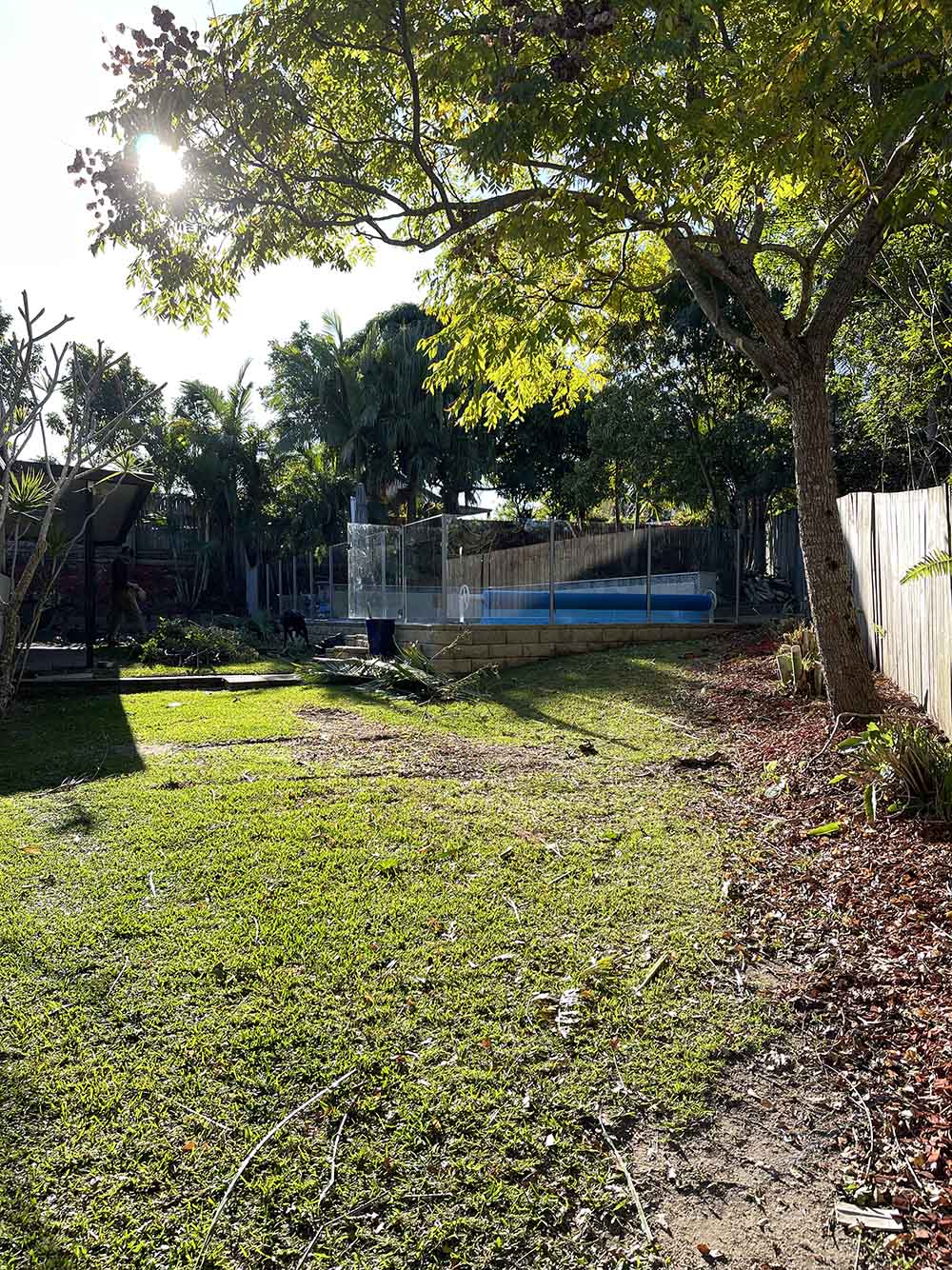
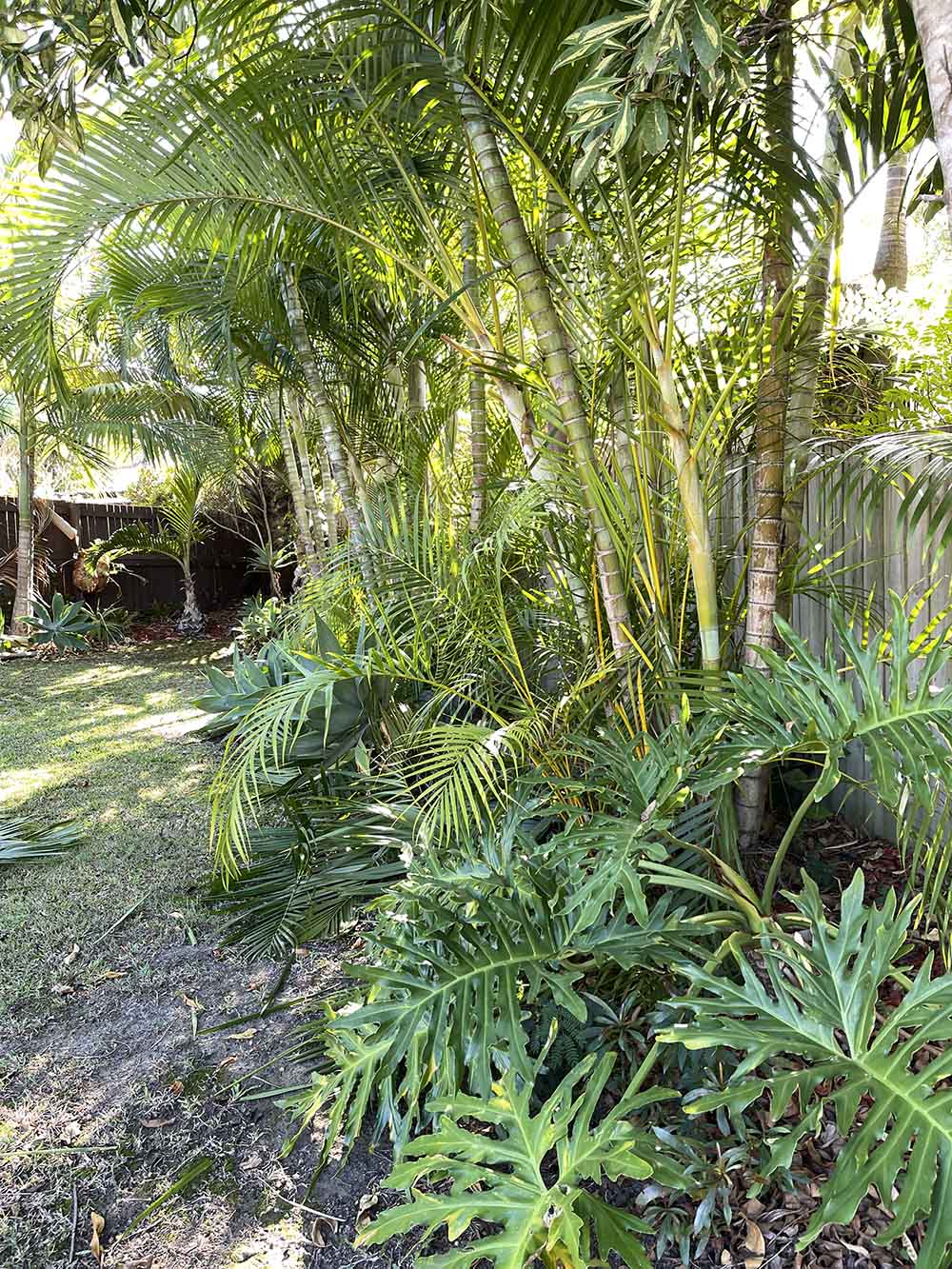
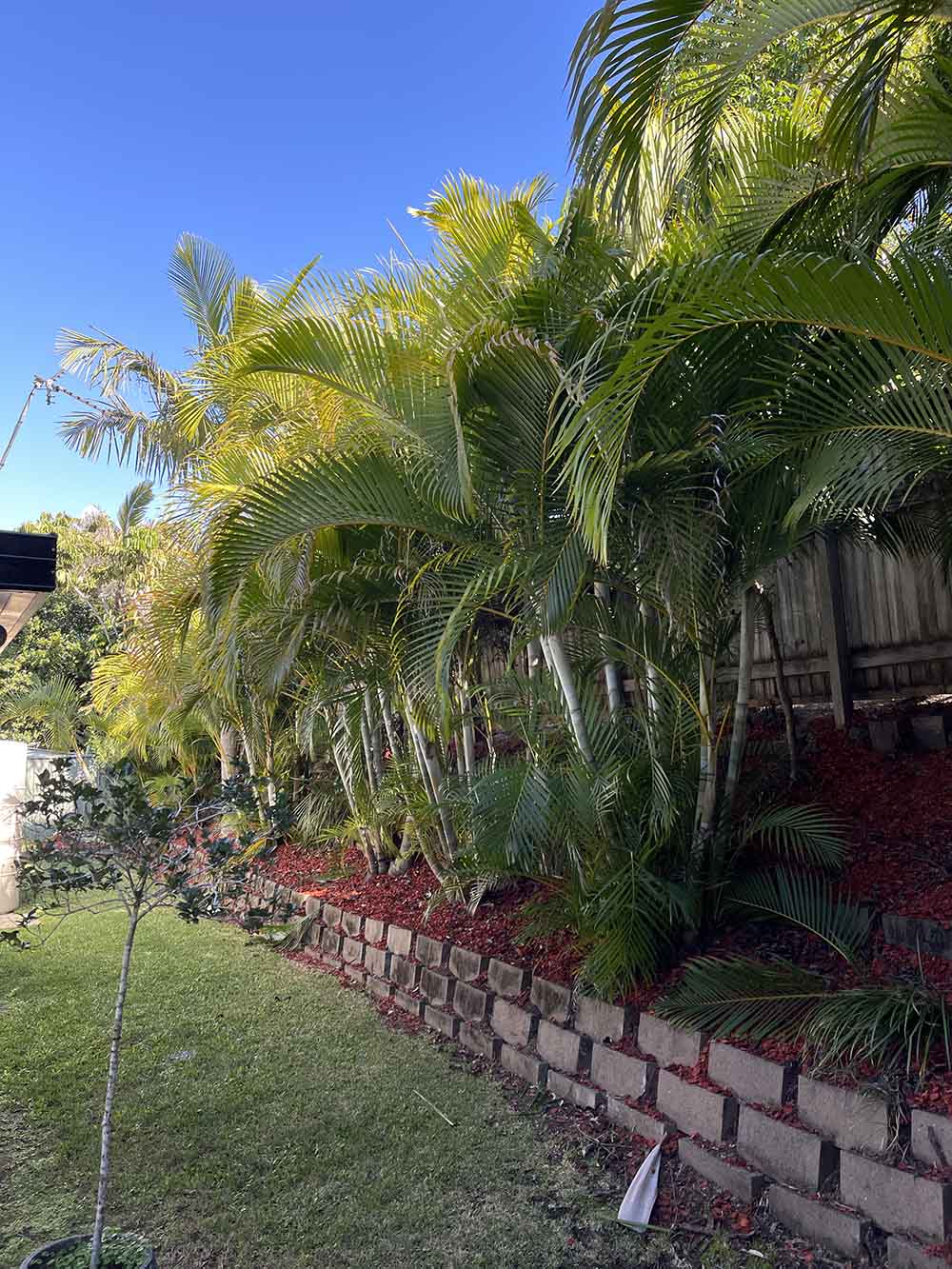
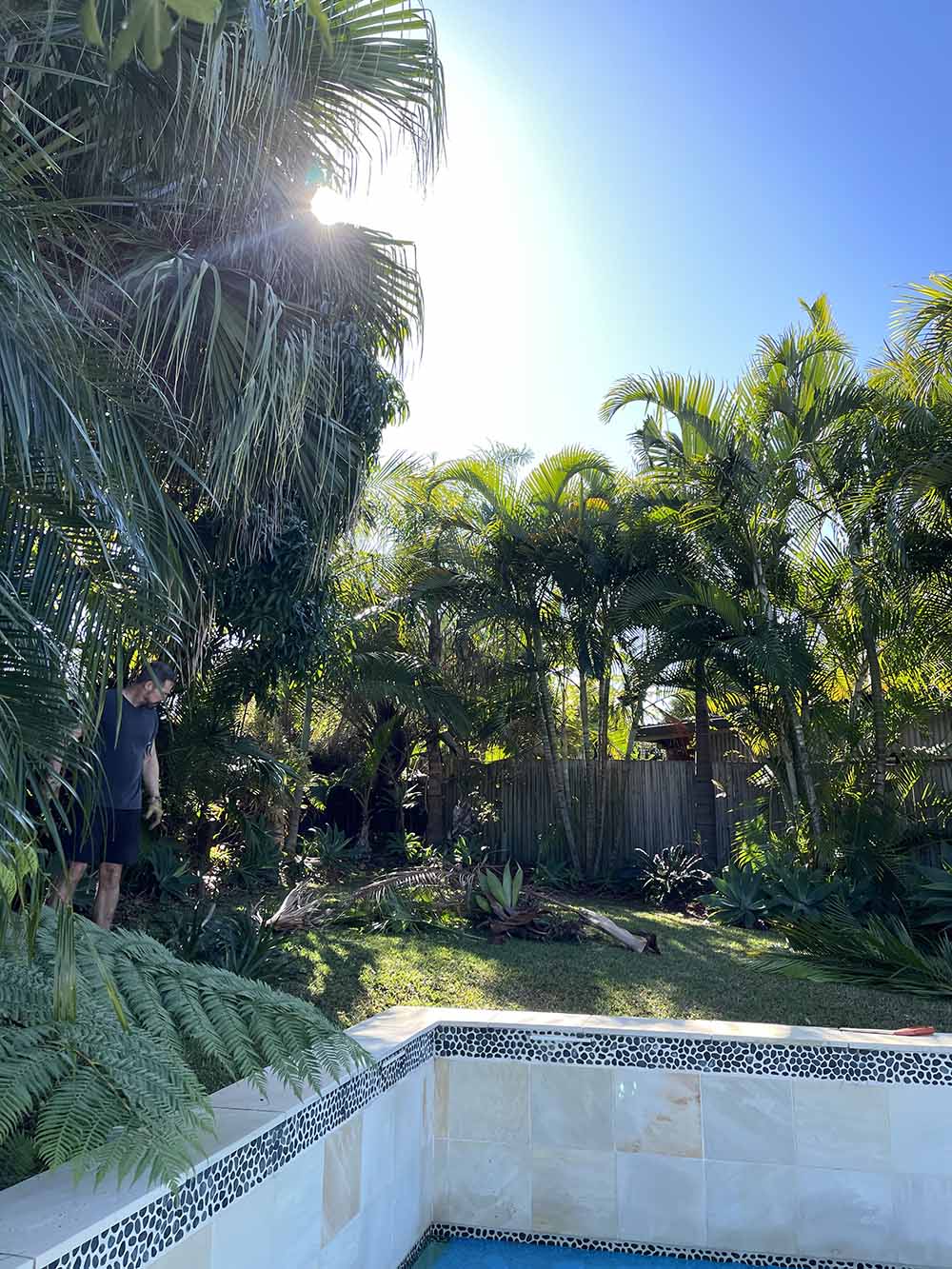
The problem with lawns
In Australia, the lawn has become a suburban staple, a symbol of pride and care with gardening shows and an entire aisle at Bunnings dedicated to helping us nurture these sprawling green expanses. But lawns are thirsty entities, and in a country where drought is commonplace, maintaining the green facade is both an environmental and moral quandary.
The ABS reports that residential outdoor water use, primarily for gardens and lawns, accounts for a significant portion of our average household water consumption. Water that could potentially support more diverse, sustainable ecosystems.
But the issue extends beyond just water.
The traditional monoculture lawn demands a suite of fertilisers and pesticides to maintain its pristine condition. Though effective in keeping the grass free of pests and weeds, these chemicals can wreak havoc on the soil’s health and the local wildlife.
Studies have shown that these substances contribute to a decline in soil biodiversity, impacting everything from microorganisms to larger garden dwellers. This chemical dependence disrupts the natural balance, creating an environment that’s less a habitat and more a green desert.
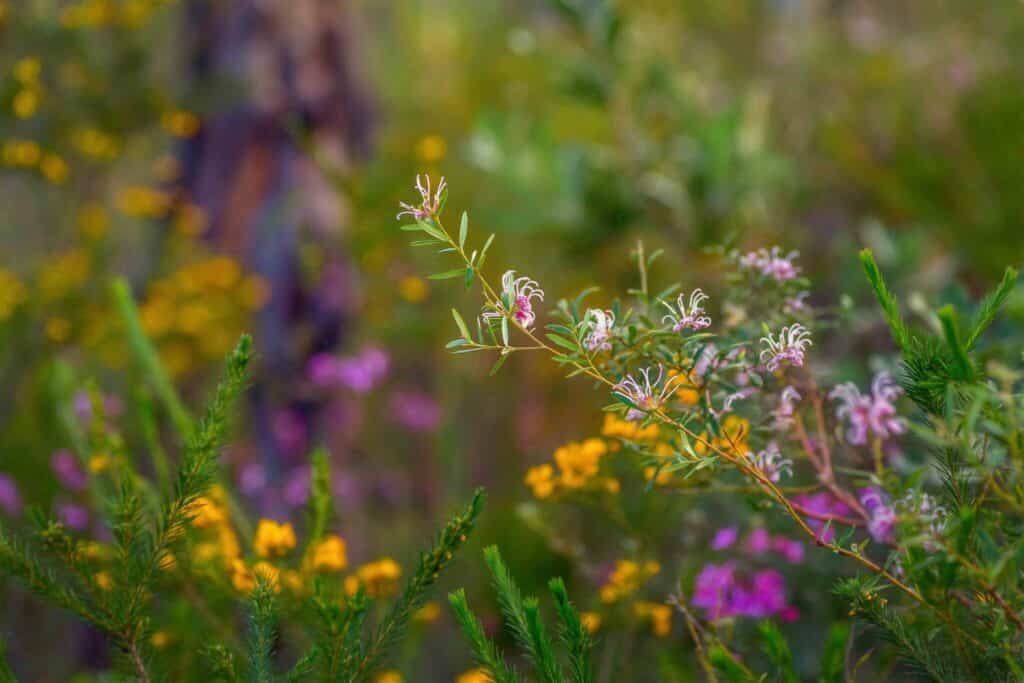
The Importance of Backyard Biodiversity
Transforming our rental property’s backyard into a mini biodiverse haven has opened my eyes to the stark contrast between a living garden and a sterile lawn.
In the typical Australian suburb, biodiversity is often an overlooked casualty.
As urban sprawl continues to encroach upon natural habitats, the animals and plants that once thrived across our country are finding themselves without a home. Then there’s the impact of pesticides and insecticides so commonly used in our yards that have far-reaching and often devastating impacts on insect populations.
Insects make up over 80% of the known animals in the world. They play many essential roles in sustaining life on Earth, most importantly that of pollinating plants and the food we eat.
The chemicals commonly used in our gardens do not discriminate, harming beneficial insects like bees, butterflies, and ladybugs just as much as the pests and weeds they target. The decline in these pollinator populations not only disrupts the pollination process, essential for the reproduction of many plants but also reverberates up the food chain.
The impacts of chemical sprays and fertilisers
In the past month, I’ve witnessed two birds affected by chemicals sprayed in a neighbouring yard.
The first, a tiny cygnet, dying next to the water bowl we leave out for the ducks and swans. We called our local bird rescue to help, but it was too late for this little one. They confirmed it was a common occurrence with water birds in the Gold Coast canals. The ducklings and cygnet’s fragile bodies not equipped to handle the cocktail of chemicals from weed killer.
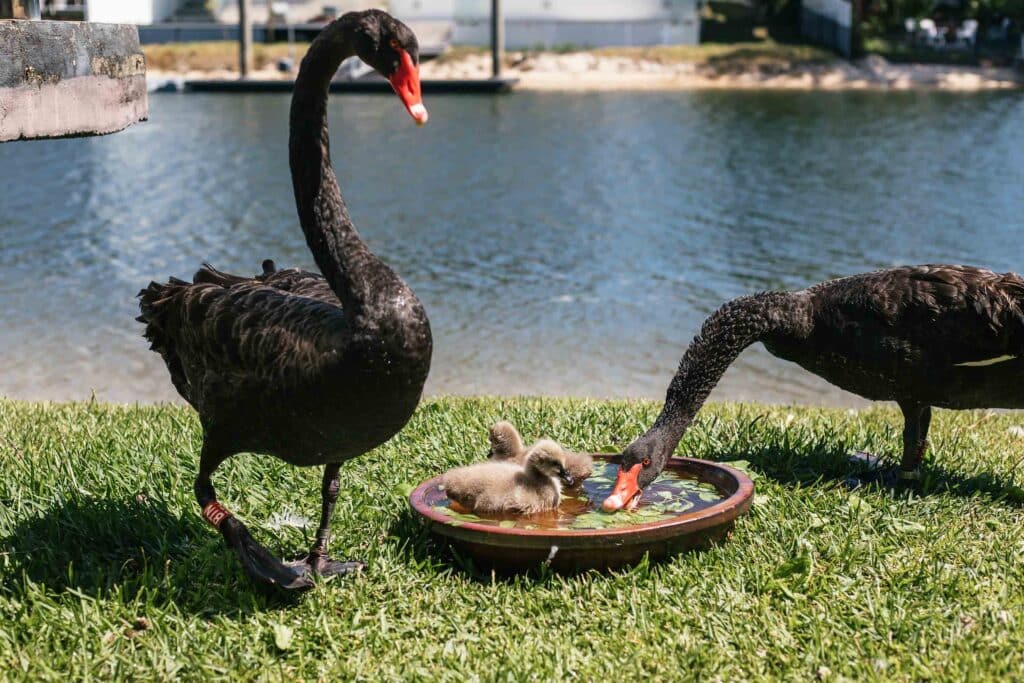
Then again, last week, we watched one of the Magpie lark pair land on the grass right near our front door.
They’re skittish on a good day, but on this day, he simply sat there, breathing laboured, as he allowed me to pick him up to place in a cardboard box. We once again contacted Wildcare, who took the bird into care overnight, citing poisoning from eating insects likely impacted by chemical sprays.
It was awful to watch this small creature twitching in pain, feeling both saddened and furious, wishing more people were educated about the impacts of pesticides and insecticides and the damage they do to native wildlife.
Fortunately, our Magpie lark recovered, the intervention came in time, and was released back to our yard the next day. In the week since I’ve seen him and his mate enjoying the insect life in our yard once again. I only hope it doesn’t stray too far from the local spray-free buffet in the future.
Birds, small mammals, and other creatures that rely on insects for food are finding their food sources drastically reduced.
This ripple effect highlights a concerning truth: the use of pesticides and insecticides in our backyards isn’t just altering the insect world; it’s unsettling the entire ecological balance, undermining the intricate web of life that sustains our natural world.
These chemicals, a common sight in agriculture and home gardens alike, are also a major threat to the tiny yet crucial inhabitants of our soil.
In 71% of cases studied, pesticides were found to harm soil invertebrates – creatures like earthworms, ants, beetles, and ground-nesting bees. Each of these species playing a pivotal role in maintaining healthy soil – nutrient cycling, decomposition, and natural pest regulation – a foundation upon which biodiversity thrives.
Like all aspects of living more sustainably – from reducing plastic to wasting less – the choices we make, even in our own backyards, have far-reaching consequences.
The health of the soil, the survival of invertebrates, and the overall well-being of our ecosystems are inextricably linked, forming a delicate balance that we have the power to either disrupt or protect.
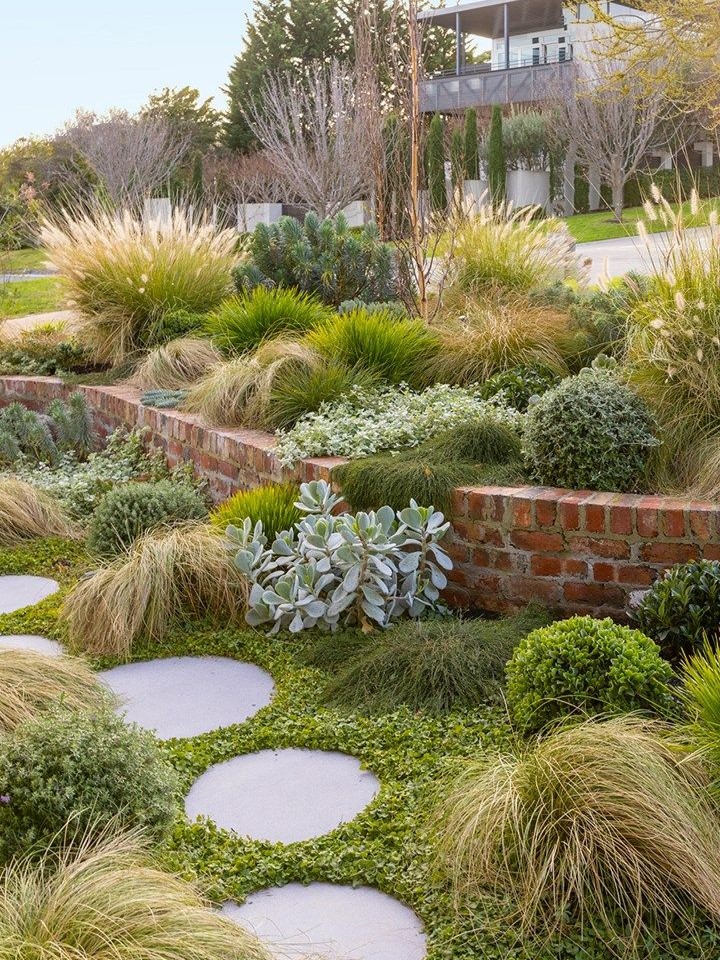
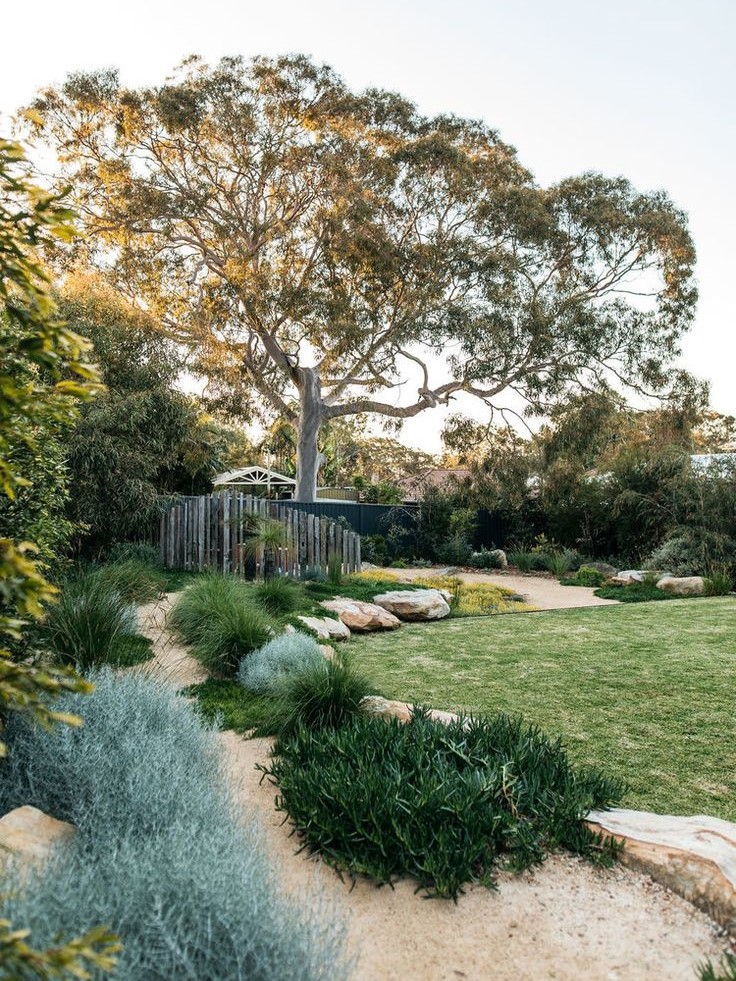
(Images above: Left – Photography Simon Griffiths; landscape design Steve Taylor COS Design via BHG. Right – Wooloware Garden by Fig Landscapes)
So, what’s the alternative to the Australian backyard norm?
As the new owner of a home with a classic ’80s Gold Coast backyard – the perfectly manicured lawn, fringed with agaves and golden canes – I’m now faced with the challenge and opportunity to reimagine this space.
The traditional grass lawn, while a staple of suburban life, has recently come under scrutiny.
Studies from the USA and Sweden highlight that the environmental costs of lawns – their water needs, pesticide use, and the pollution from lawnmowers – outweigh their benefits like oxygen production and carbon sequestration.
This has spurred a growing interest in lawn alternatives, particularly those better suited to Australia’s unique climate and vegetation. A shift driven by our increasing environmental awareness and a desire for diversity in our urban landscapes.
Projects like this one – Woody Meadow by the University of Melbourne – is a great example of how native plants and water-efficient landscaping can revolutionise our gardens.
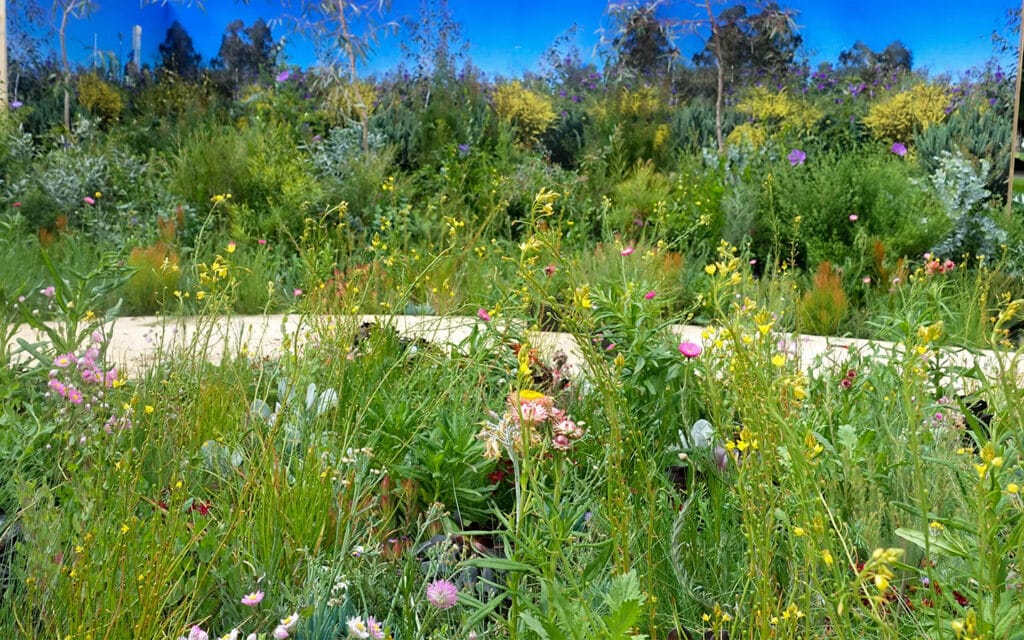
I understand the practicality of lawns, especially for families with kids and pets who need an open area to play.
But instead of the traditional green lawn expanse, we could create a space that includes low-growing ground covers, drought-resistant native plants and grasses, and natural materials like mulch, logs, and rocks, even if it’s only a small area along the fringes of our backyards.
The garden plan and journey so far
It’s been four months since taking possession of what we’ve named The Green House. With most of our budget directed towards the renovations, the garden redesign will be a hands-on, DIY venture – by two people with little gardening and zero landscaping experience.
The transformation is well underway. Beginning with the daunting task of removing all the palm trees and stumps.
We have four distinct spaces spread around the house:
- Up behind the pool – what we are currently working on. This is where we cleared the majority of the palm trees, digging up the stumps, and used the ground-up waste and garden mulch to start two hot compost piles to be used in the veggie beds in a few months.
- The sloping garden and corridor behind the house – the tricky spot. The slope is steep and presents a host of challenges, including reinforcing the levels and finding plants to suit the heavy clay soil. The ground below, the ‘corridor’, is a shaded and wet area where water gathers from the runoff of the slope.
- The veggie garden – the plan is for two large raised beds, a greenhouse, the compost bins, and a cottage-style flower garden. We’ll build the beds and erect the greenhouse over the Christmas holidays.
- The library garden – a moderately sized patch of grass outside my office and home library. The last space to tackle after the alfresco renovation in a couple of years.
The goal is to create a visually appealing space that’s also low maintenance and water-wise, focusing on plants endemic to Southeast Queensland. These native species are not only more suited to our local climate but also require less water and care.
The plan is to tackle one area at a time around the renovations. Conscious that newly planted seedlings require quite a bit of water and care, something we can’t maintain until we move in, once the house is completed in April next year.
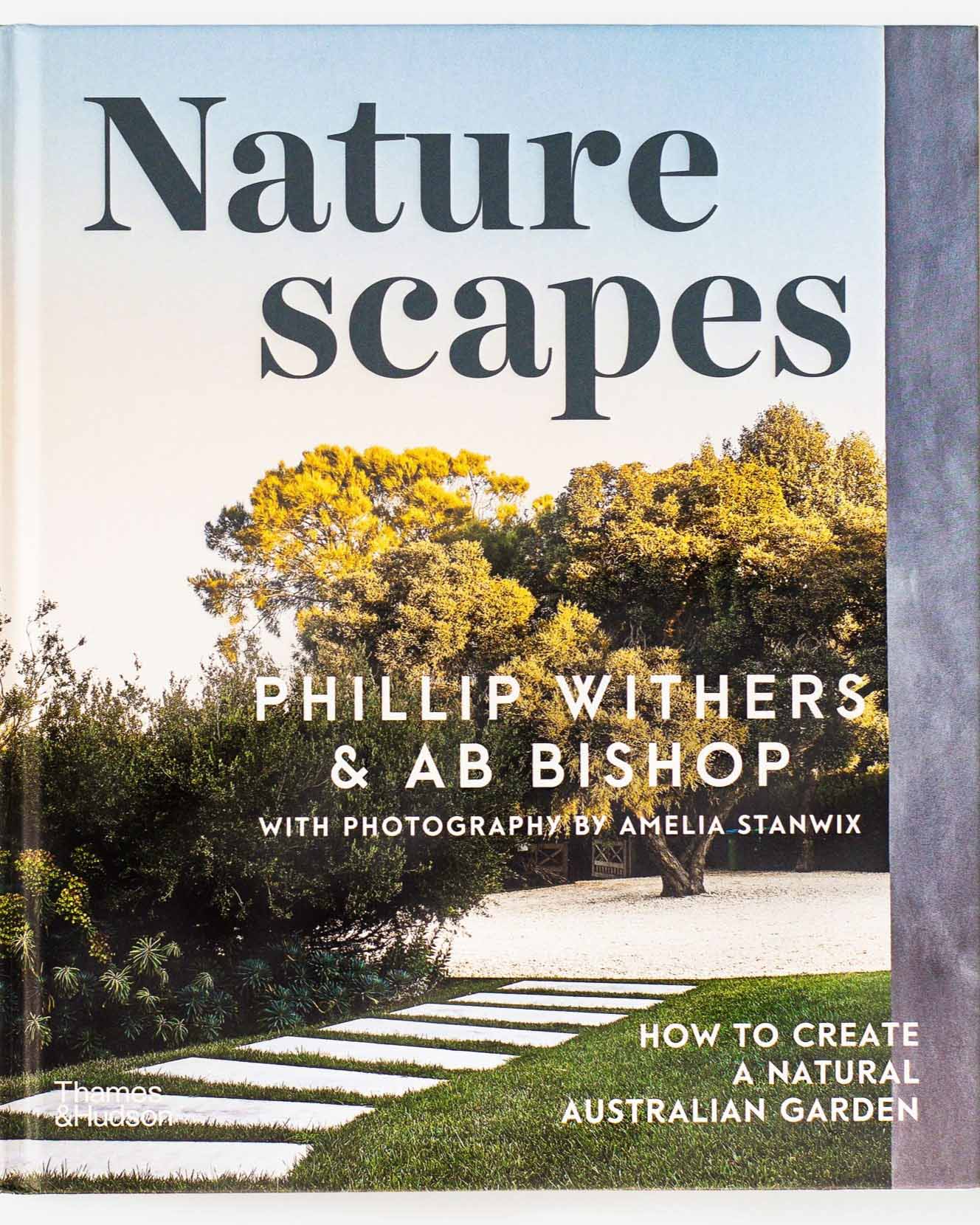
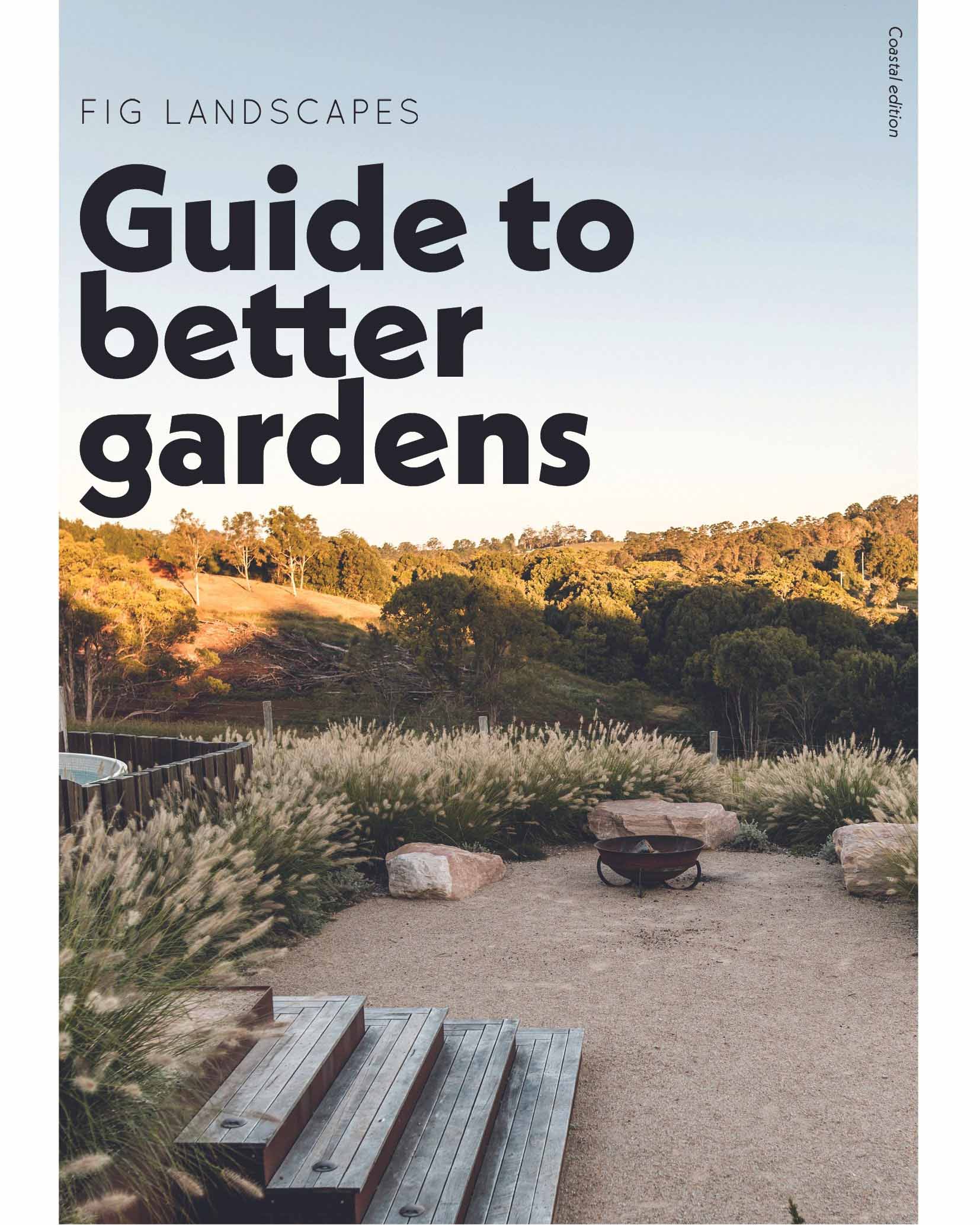
Where to start?
Inspiration began with this Pinterest board, a collage of ideas shaping our vision.
Amidst the weekends of garden labour, I’ve also plunged headfirst into research, learning everything I can about garden design, suitable species, ground covers and lawn alternatives. It’s a little overwhelming; there’s a lot of information to take in, but I am compiling lists of resources and plants that I will share with you in the next blog.
I discovered the book: “Naturescapes” by Phillip Withers and AB Bishop, a garden guide for Australia in general. It’s a deep dive into naturalistic gardens that resonate with our ethos. It’s not only about creating a garden but also, as wonderfully quoted in the book, “creating a ripple effect across our lives and the greater environment.” Naturescapes is packed with detailed advice on rewilding urban spaces – plant selection, garden zoning, microclimates, and creating habitats for wildlife. If you’re on a garden journey like us, it’s an excellent place to start.
I’ve also downloaded the eBook “Guide to Better Gardens” by Fig Landscapes. It’s a treasure trove of knowledge tailored for coastal gardens, specifically for Northern NSW up to the Sunshine Coast. This guide has become an indispensable resource in planning the types of plants that will suit our garden. Ensuring that what we plant not only survives but thrives.
It’s also about encouraging change
Over the past few months, I’ve also discovered the journey from a typical lawn to a diverse garden space isn’t just about changing plants. It’s about reimagining our relationship with the land – turning our homes into sanctuaries for both ourselves and the flora and fauna that share our little corner of the world.
Imagine if more of us embarked on similar rewilding journeys. More people across the country creating spaces interwoven with native biodiversity, each backyard a piece of a larger, thriving ecosystem. Imagine the collective impact it would have.
Our individual actions, when multiplied, can become a powerful force for environmental conservation. In nurturing our gardens, we nurture the planet.
You can follow more of my garden journey and Project Rewild My Backyard on my Substack newsletter here.
*This story includes paid links

